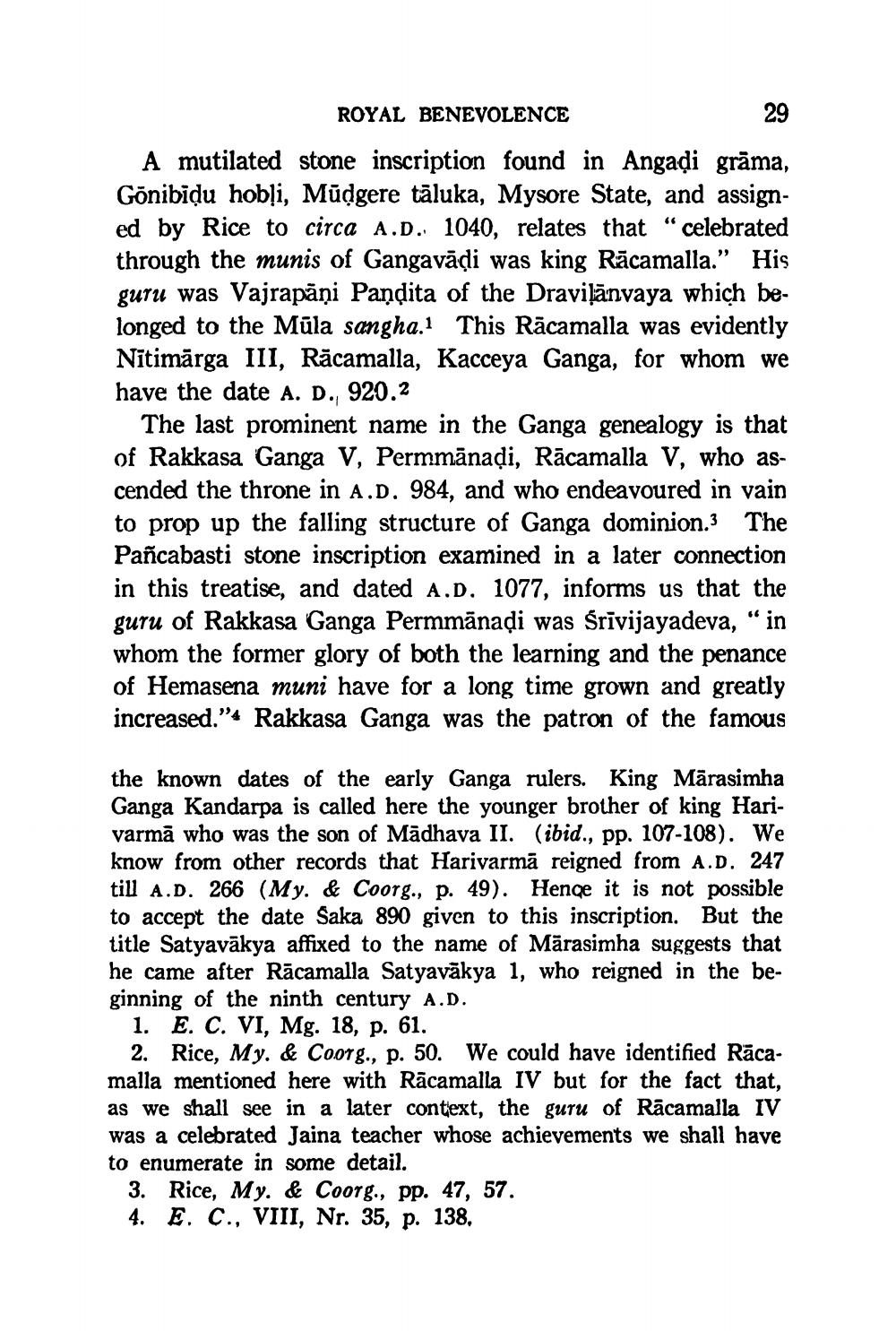________________
29
ROYAL BENEVOLENCE A mutilated stone inscription found in Angadi grāma, Gönibidu hobļi, Mūdgere tāluka, Mysore State, and assigned by Rice to circa A.D. 1040, relates that "celebrated through the munis of Gangavādi was king Rācamalla.” His guru was Vajrapāņi Pandita of the Draviļānvaya which belonged to the Mūla sangha.1 This Rācamalla was evidently Nītimārga III, Rācamalla, Kacceya Ganga, for whom we have the date A. D., 920.2
The last prominent name in the Ganga genealogy is that of Rakkasa Ganga V, Permmānadi, Rācamalla V, who ascended the throne in a.d. 984, and who endeavoured in vain to prop up the falling structure of Ganga dominion. The Pañcabasti stone inscription examined in a later connection in this treatise, and dated A.D. 1077, informs us that the guru of Rakkasa Ganga Permmānaời was Śrīvijayadeva, “ in whom the former glory of both the learning and the penance of Hemasena muni have for a long time grown and greatly increased.”+ Rakkasa Ganga was the patron of the famous
the known dates of the early Ganga rulers. King Mārasimha Ganga Kandarpa is called here the younger brother of king Harivarmā who was the son of Mādhava II. (ibid., pp. 107-108). We know from other records that Harivarmā reigned from A.D. 247 till A.D. 266 (My. & Coorg., p. 49). Hence it is not possible to accept the date Saka 890 given to this inscription. But the title Satyavākya affixed to the name of Mārasimha suggests that he came after Rācamalla Satyavākya 1, who reigned in the beginning of the ninth century A.D.
1. E. C. VI, Mg. 18, p. 61.
2. Rice, My. & Coorg., p. 50. We could have identified Rācamalla mentioned here with Rācamalla IV but for the fact that, as we shall see in a later context, the guru of Rācamalla IV was a celebrated Jaina teacher whose achievements we shall have to enumerate in some detail.
3. Rice, My. & Coorg., pp. 47, 57. 4. E. C., VIII, Nr. 35, p. 138.




